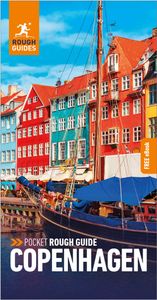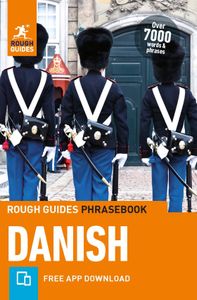Kronborg Castle
The town’s single great tourist draw is Kronborg Castle (daily: June–Aug 10am–5.30pm; Sept–May 11am–4pm; Nov–March closed Mon; 90kr winter, 140kr summer), principally because of its literary associations as Elsinore Castle, the setting for Shakespeare’s Hamlet. There’s no evidence Shakespeare ever visited Helsingør, and the tenth-century character Amleth on whom his hero was based long predates the castle. Nevertheless, the cottage industry of Hamlet souvenirs thrives here. The present castle dates from the sixteenth century when it jutted into the sound as a formidable warning to passing ships not to consider dodging the toll, and it remains a grand affair, enhanced immeasurably by its setting; the interior, particularly the royal chapel, is memorably ornate. Beneath the castle are the casemates, gloomy cavernous rooms that served as soldiers’ quarters during times of war.
National Maritime Museum
The big attraction just south of the castle is the revamped former shipyard area where the Maritime Museum of Denmark (Ny Kronborgvej 1; July & Aug daily 10am–5pm; Sept–June daily 11am–4pm; 110kr) is one of the country’s premiere places to learn about Denmark’s seafaring past and present.
Set under-ground in the old dry docks next to the Castle, the building comprises a continuous ramp that loops around the dock walls, allowing for unobstructed views from the Castle. Inside, the technologically advanced, well-curated collections span Viking, medieval and modern seafaring, exploration and merchant shipping. There are other unique finds, including a colossal Maersk freight container, relics from Denmark’s conquests in Greenland, India, the West Indies and West Africa and – yes, really – the world’s oldest surviving ship’s biscuit (1852). The area is also the site of the Culture Yard (Mon–Fri 10am–9pm, Sat & Sun 10am–4pm; free), a theatre, concert venue, library and café-restaurant housed in an innovatively designed glass-steel structure created from old wharf buildings.
The medieval quarter
Helsingør’s well-preserved medieval quarter is dominated by Stengade, the main shopping street, which is linked by a number of narrow alleyways to Axeltorv, the town’s small market square and– a nice place to enjoy a beer. Near the corner of Stengade and Skt. Annagade is Helsingør’s cathedral, Skt. Olai Kirke (Mon–Sat: May–Aug 10am–4pm; Sept–April 10am–2pm; free), while beyond is Skt. Mariæ Kirke (mid-May to mid-Sept Tues–Sun 10am–3pm, mid-Sept to mid-May Tues–Sun 10am–2pm, free; guided tours at 2pm Mon–Fri; 20kr), whose Karmeliterklostret, built circa 1400, is now the best-preserved medieval monastery in Scandinavia (guided tours only; arrange via the church office). Its former hospital now contains the Town Museum (Tues–Sun noon–4pm, Sat till 2pm; 20kr), which displays an unnerving selection of surgical tools used in early brain operations.





















